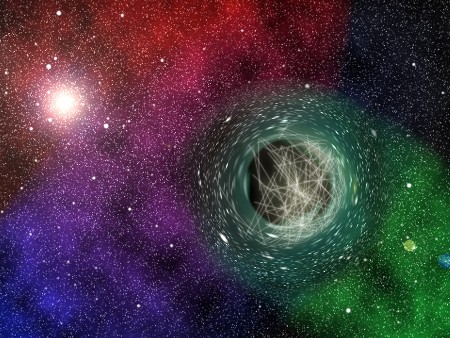Daniel Grumiller and Gabriela Mocanu, researchers at the Vienna University of Technology, have devised a new technique to demonstrate the existence of theoretical ‘axions,’ which may encircle a black hole and extort energy from it. This may result in the emission of gravity waves, which can then be calculated.
 Artist's impression of a black hole, surrounded by axions. (Copyright: The Vienna University of Technology)
Artist's impression of a black hole, surrounded by axions. (Copyright: The Vienna University of Technology)
Axions are very-low-mass theoretical particles. Since there is a direct relation between mass and energy according to Einstein’s theory, only minimal amount of energy is needed to create axions. Each particle is depicted as a wave in quantum physics. Heavy particles have smaller wavelengths, while the low-energy axions can have several kilometers of wavelengths. The research of Grumiller and Mocanu is based on the study performed by Asmina Arvanitaki and Sergei Dubovsky (USA/Russia).
In their research, Grumiller and Mocanu have demonstrated that axions can surround a black hole just like electrons encircling the nucleus of an atom. The gravitational force ties the axions and the black hole together just like the electromagnetic force that acts between the nucleus and the electrons. However, electrons are fermions, which imply that two electrons cannot have the same quantum state. On the other hand, axions are bosons, which mean several axions can have the same quantum state simultaneously. Thus, axions can form a ‘boson-cloud’ encircling the black hole. This boson-cloud constantly extracts energy from the black hole, which in turn increases the count of axions in the cloud.
Grumiller informed that this boson-cloud collapses suddenly. The surprise fact is that this ‘bose-nova’ is measurable. Space and time get vibrated by this event, thus causing emission of gravity waves, which can be measured by gravity wave detectors; and in 2016, these detectors are anticipated to achieve an accuracy that allows unambiguous detection of gravity waves.
The new calculations at the Vienna University of Technology demonstrate that these gravity waves are helpful in understanding new types of particles in addition to providing new astronomical insights.